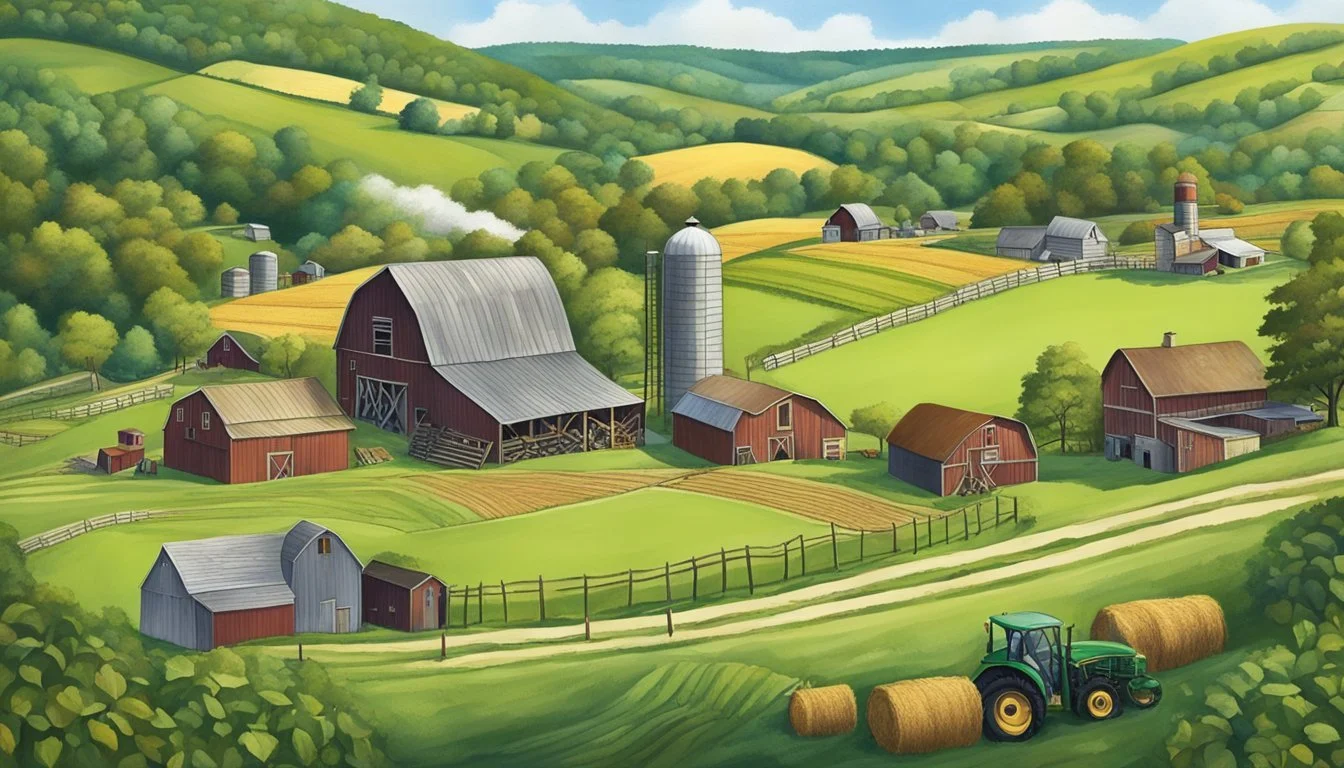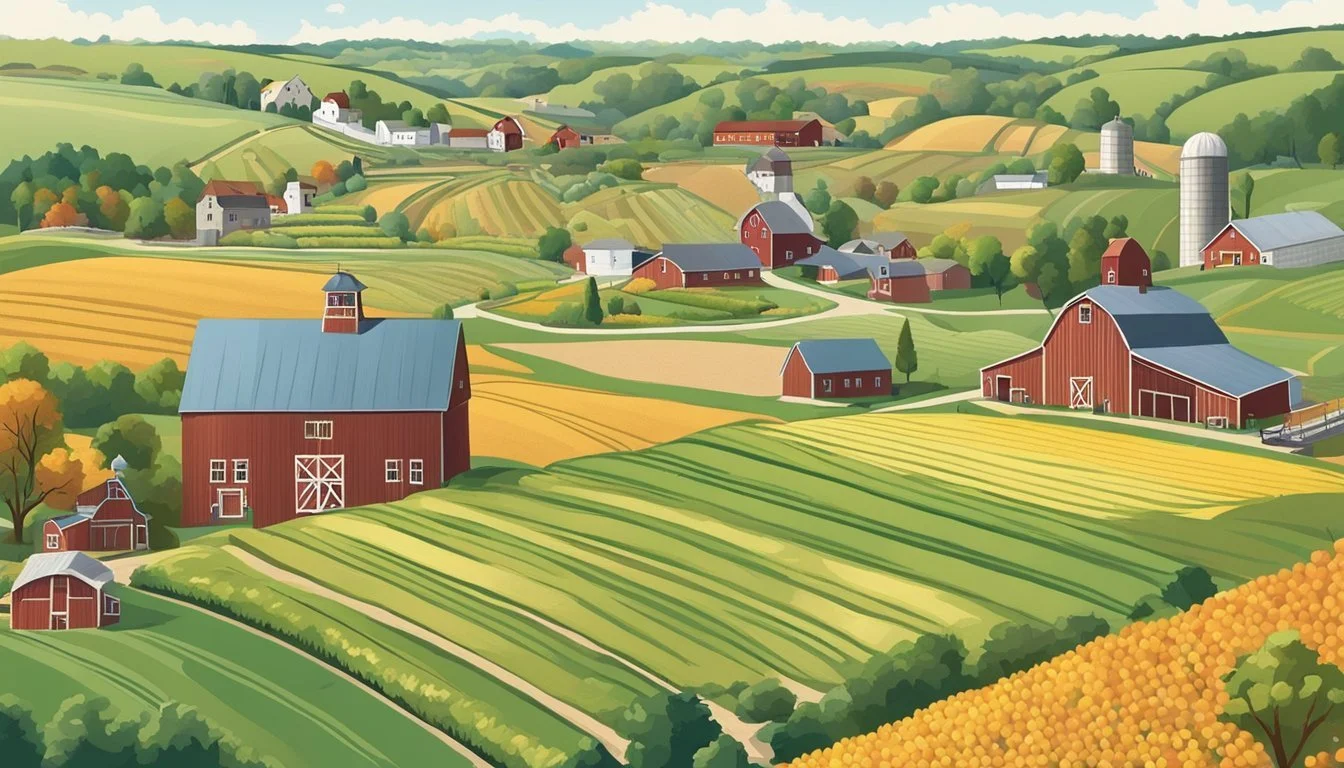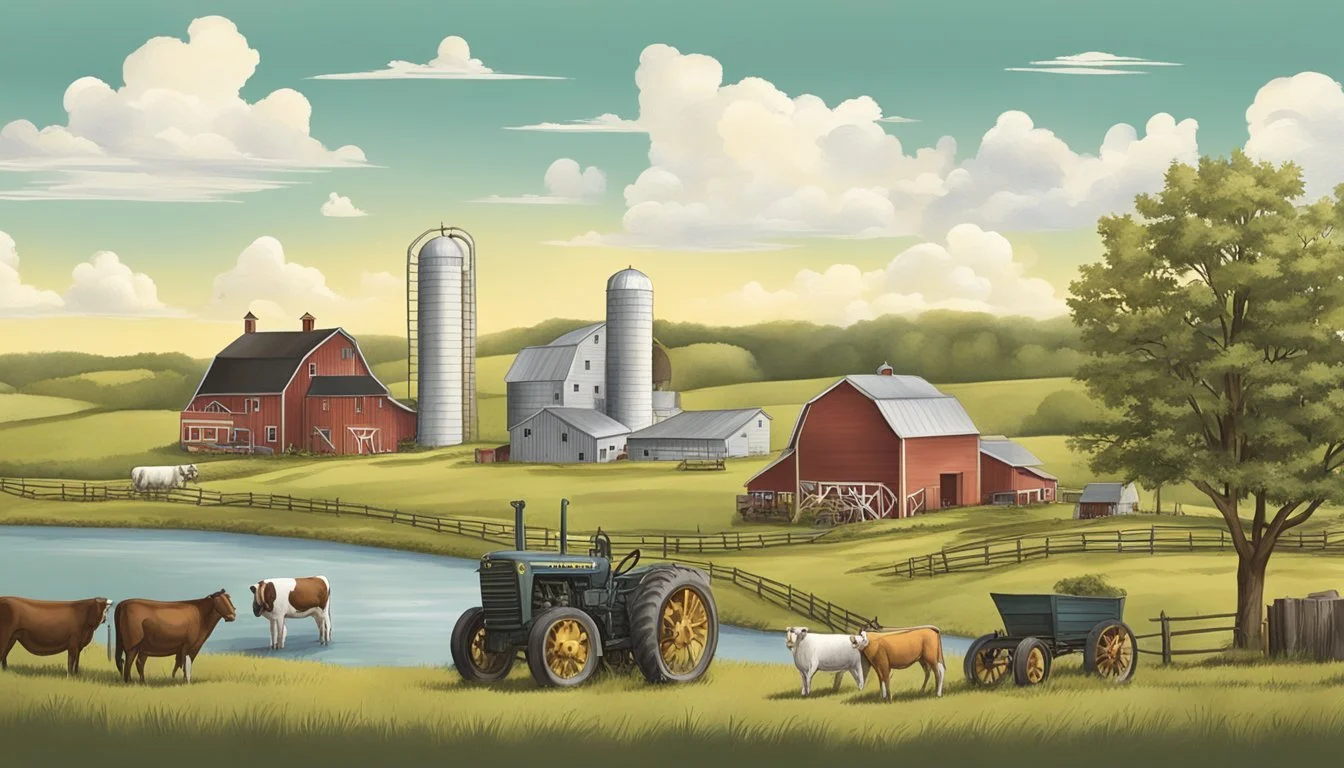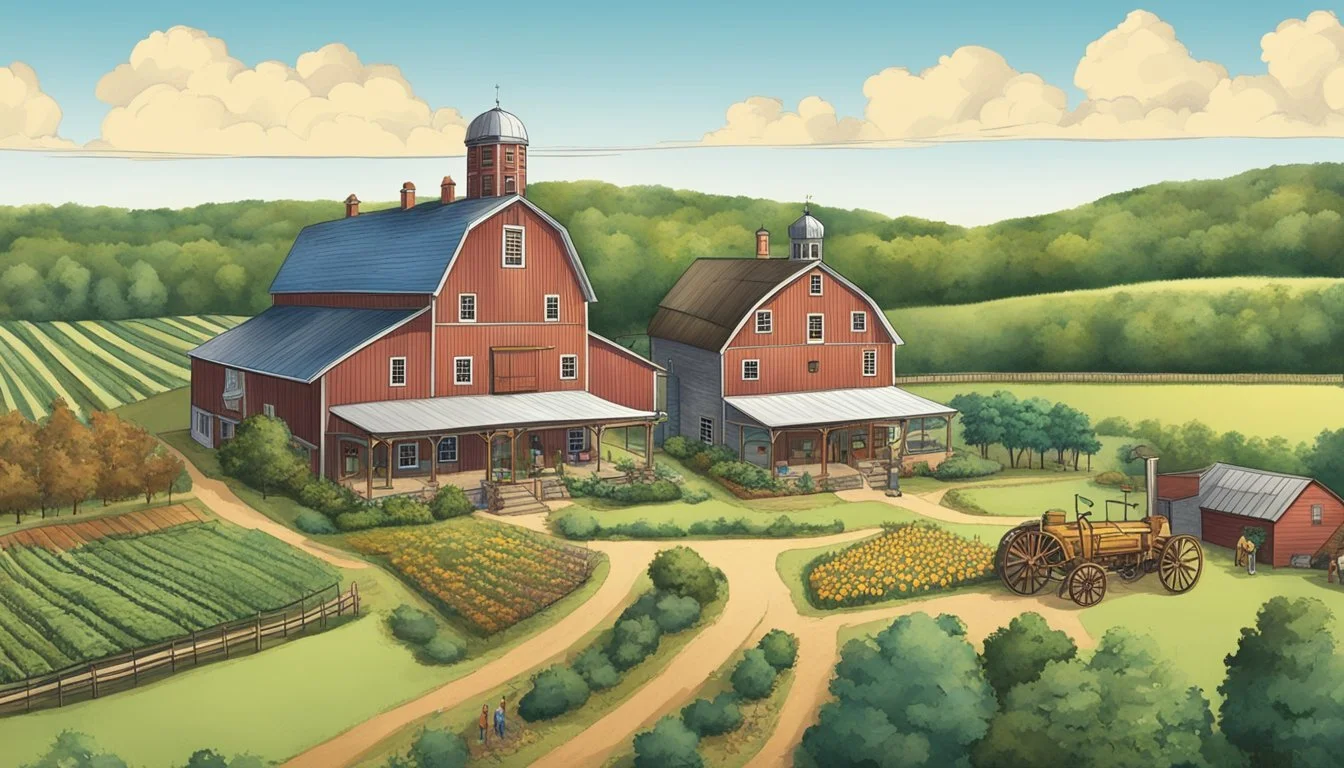Historical Farms and Agricultural Museums in Pennsylvania
A Guide to Agricultural Heritage
Pennsylvania's rich tapestry of historical farms and agricultural museums offers a unique window into the past, providing insight into the state's rural heritage and the evolution of farming practices. This region, known for its pastoral landscapes and agricultural productivity, preserves the history of its early settlers and their way of life through meticulously maintained historical sites and educational museums. Visitors to these sites can step back in time to experience Pennsylvania's agrarian roots and understand the significance of agriculture in shaping the state's economy and culture.
At the heart of this preservation effort is the Landis Valley Village & Farm Museum, a living history museum that stands as a testament to Pennsylvania German life from the 18th to the 20th century. With over 40 historic structures on 100 scenic acres, it encapsulates the transformation of agrarian societies during a period of remarkable change. Meanwhile, programs like the Pennsylvania Agricultural History Project contribute significantly to documenting and interpreting the state's agricultural advancements and regional farming techniques.
Moreover, the Pennsylvania Historical & Museum Commission's Rural Farm and Village History Trail not only includes Landis Valley but also extends to other significant locations like the Ephrata Cloister, a key historical site that provides additional context to Pennsylvania's rural beginnings. Each location along the trail emphasizes different aspects of Pennsylvania's agrarian past, from Colonial times to more recent history, allowing visitors to engage with and appreciate the relics of agricultural heritage that have defined the state's identity for centuries.
History of Agriculture in Pennsylvania
Pennsylvania's agricultural heritage is as extensive and diverse as its landscapes, shaped significantly during the colonial period and the 19th century. This heritage is now closely linked with the efforts of historic preservation, where sites of agricultural significance find recognition on the National Register of Historic Places.
Colonial and 19th Century Farming Practices
In colonial times, Pennsylvania's fertile soil and favorable climate made it a hub for diverse farming practices. Agriculture served as the economic backbone for early settlers, with farms producing wheat, corn, and rye. 19th century rural Pennsylvania saw the introduction of new farming technologies, which increased productivity and transformed the state into a leading grain producer.
Agricultural Development and Historic Preservation
In response to the growing interest in preserving the state's agricultural legacy, the Pennsylvania Historical and Museum Commission launched the Pennsylvania Agricultural History Project. This initiative documents historical farming systems and promotes the understanding of agricultural development within the state. Significant locations have been identified, with many rural farms and agricultural landscapes recognized by the National Register of Historic Places for their contribution to Pennsylvania's agricultural and cultural history.
Historical Farms and Agricultural Museums Overview
Pennsylvania boasts a remarkable array of historical farms and agricultural museums that offer immersive experiences into the rural past. These institutions serve as custodians of agricultural heritage, providing visitors with both tangible and interpretive connections to farming history.
Living History Farms
Living history farms in Pennsylvania exemplify open-air museums where everyday activities of the past become vivid and interactive experiences. Visitors to these farms can witness firsthand the traditional farming methods and lifestyles. The Association for Living History, Farm and Agricultural Museums (ALHFAM) supports these vibrant institutions, ensuring they remain authentic and accurately portray rural history.
Quiet Valley Living Historical Farm
The Quiet Valley Living Historical Farm operates as a non-profit museum with a mission to preserve Pennsylvania's agricultural heritage. Listed on the National Register of Historic Places, this farm offers a look at life on a 19th-century farm through tours and educational programs. It stands as an exemplary site, embodying the essence of a living history museum within the state.
Museum Collections and Exhibits
Pennsylvania's agricultural museums pride themselves on their extensive museum collections and exhibits. Artifacts range from traditional farming tools to household items, each telling a story of the agricultural evolution. For instance, the Landis Valley Village & Farm Museum not only preserves Pennsylvania German heritage but also presents varied exhibits on rural history and farming practices, conveying the significance of the agricultural narrative.
Cultural and Educational Activities
Pennsylvania's historical farms and agricultural museums offer a plethora of hands-on experiences and learning opportunities that embrace the rich agricultural heritage of the region. Through immersive cultural and educational activities, visitors gain a profound understanding of past farming practices and rural life.
Period Demonstrations and Workshops
Demonstrations of traditional farming techniques and crafts play a vital role in the educational mission of places like the Landis Valley Village and Farm Museum. Authentic workshops allow visitors to learn how to weave using time-honored methods or tackle cooking recipes from historical times. Participants often don period dress to fully engage with the past, enriching the educational experience with a visual authenticity.
Seasonal and Special Events
Throughout the year, special events mark the calendars of historical farms in Pennsylvania. From spring planting to fall harvest, these seasonal festivities offer a window into the cyclical nature of rural life. Visitors can attend themed events where activities such as traditional crafts or historical cooking demonstrations celebrate the state’s agricultural history. Special events may include holiday markets, historical fairs, and other celebrations that highlight Pennsylvania's rich agricultural legacy.
Conservation and Public Organizations
Pennsylvania's commitment to preserving its agricultural heritage is evident through the efforts of several organizations dedicated to conservation and public engagement. These entities work collaboratively to educate, conserve, and celebrate the state's rich farming history through various programs and initiatives.
Pennsylvania Historical and Museum Commission (PHMC)
The PHMC plays a critical role in the conservation of agricultural history in Pennsylvania. Through the Pennsylvania Agricultural History Project, the commission provides resources such as the Historic Agricultural Resources of Pennsylvania Multiple Property Documentation Form, which documents the state's farming evolution. This initiative captures the essence of Pennsylvania's rural past, offering a field guide to historic farm buildings and landscapes.
Association for Living History, Farm and Agricultural Museums (ALHFAM)
Members of ALHFAM are passionate about living history, farm, and agricultural museums. As an organization, ALHFAM serves those involved in these specialized museums, including staff, volunteers, and institutions. It works to foster best practices in the field and provide resources for the interpretation of agricultural history, not just in Pennsylvania but on an international level, drawing on the collective expertise of its members.
State and Federal Contributions
Various state and federal agencies contribute significantly to the conservation of Pennsylvania's historic farms and agricultural landmarks. For instance, the Pennsylvania Department of Transportation (PennDOT), in collaboration with the Federal Highway Administration (FHWA), develops projects that may impact historic sites, ensuring preservation is considered. Similarly, the National Park Service (NPS) partners with local entities to secure historic structures and provide educational opportunities, underlining the multiparty approach to conserving agricultural history.
Exploring Pennsylvania's Agricultural Heritage
Pennsylvania boasts a rich tapestry of agricultural history that dates back to its early American settlements, presenting a valuable opportunity to explore historical farming practices and cultural influences, particularly of the Pennsylvania German community.
Heritage Tourism and Trails
Pennsylvania's agricultural heritage is accessible through a variety of tourism trails that lead visitors through time-honored farmlands and villages. One such trail is the Rural Farm and Village History Trail which takes explorers through pastoral landscapes that encapsulate the transition from colonial foundations to contemporary farmland. Emphasizing the historic significance of rural settings, this trail affords a holistic view of the state's agricultural evolution.
Tour Highlight: Ephrata Cloister, a unique religious community known for its early American art and architecture.
Experience: Guided and self-led tours provide an immersive encounter with Pennsylvania's agrarian past.
Historic Agricultural Properties and Landscapes
The commonwealth is dotted with historic agricultural properties that tell the story of farming life across the centuries. The Pennsylvania Agricultural History Project serves as a custodian of this legacy, offering detailed narratives and resources that bring historic farming systems to life. The project identifies significant farms like the Schrot Farm in Clearfield County, which provides insight into subsistence farming typical of the Lawrence Township area.
Historic Agricultural Regions: The project classifies farms by historic regions, enhancing understanding of local agricultural practices.
MPDF (Multiple Property Documentation Form): Utilized for listing properties in the National Register of Historic Places, the MPDF process helps preserve important agricultural sites.
Pennsylvania's agricultural heritage is not only preserved in memory and records but is also a living part of the state's identity—a history deeply rooted in the soil of its farms and the sturdy, pioneering spirit of its people.
Agricultural Practices and Livestock
Pennsylvania is steeped in a rich tradition of agriculture, distinguished by historical methodologies in crop cultivation and the integral role of livestock which were key to the survival and development of farms throughout the state.
Historic Farming Techniques and Crop Cultivation
Historical farms across Pennsylvania vividly showcase the evolution of farming techniques and crop cultivation. From the simple ploughs and horse-drawn equipment of the 1700s to the advanced machinery of the 20th century, these farms reveal the progressive changes in agricultural practices. Pennsylvania's terrain and climate have historically supported a variety of crops, with-gardening as a prominent feature for self-sustenance and trade. Agricultural resources, such as the Historic Agricultural Resources of Pennsylvania Context, provide insights into the systematic approach adopted by gardeners and farmers over the decades.
Key crops included:
Corn and wheat: Staple grains that formed the backbone of Pennsylvania's agricultural output.
Orchards: Extensive cultivation of apples and peaches.
Vegetable gardens: For local consumption and market sale.
The Role of Livestock and Animal Husbandry
Livestock has been an integral component of Pennsylvania's farms, contributing both to the local economy and to the sustainability of farming practices. Cow herding and dairy farming are historically significant, with milk, cheeses, and butter among the primary products. Sheep have also played a pivotal role, with wool production being a major aspect of farm life. Animal husbandry practices reflected a deep understanding of breeding, grazing, and managing livestock, ensuring the health and productivity of these animals.
Important livestock on Pennsylvania farms:
Cows: Essential for dairy production; breeds like the Holstein known for high milk yield.
Sheep: Raised primarily for wool and meat, with a focus on sustainable grazing methods.
Architecture and Infrastructure
Agricultural architecture in Pennsylvania showcases a rich heritage, manifesting through meticulously designed farm structures. Each building serves a purpose, playing a crucial role in the efficient operation of the rural landscapes.
The Pennsylvania Bank Barn
The Pennsylvania Bank Barn stands as a classic example of functional design melded with environmental awareness. Structurally, these barns are characterized by their two-level construction. The upper level often houses a large, central threshing floor, flanked by storage areas for crops and farm equipment. Below, accessible from a banked ramp on the higher ground side, are the livestock stables. The hallmark of the Pennsylvania Bank Barn is its ground-level accessibility on two separate floors, enabled by the terrain’s natural slope. This configuration provided farmers with pragmatic solutions for managing their operations, epitomizing the utilitarian yet ingenious rural architecture of the state.
Rural Structures and Their Uses
Rural structures across Pennsylvania's farmlands are tailored to the needs of their specific agricultural practices. Outbuildings, such as chicken coops, smokehouses, and dairy houses, were designed for specialized uses. These multipurpose structures were vital to the daily workings of the farm, housing tools, produce, and livestock. The landscapes themselves were also carefully planned. They included features like orchards, kitchen gardens, and pastures, essential for the sustainability of the farmstead. The use and placement of these buildings and landscapes reflect the adaptability and resourcefulness of Pennsylvania's farmers in their ongoing relationship with the land.
Research and Education
In Pennsylvania, extensive efforts are made to preserve the agricultural heritage through meticulous research and educational initiatives. These programs not only document the rich history but also serve as a knowledge base for future generations.
Pennsylvania State University Initiatives
Pennsylvania State University plays a pivotal role in the promotion and education of agricultural history. It actively participates in projects that bring to light the diverse agricultural practices and systems that have developed across the state over the years. The university collaborates with various stakeholders to enrich the educational content and resources, including valuable historic census data and research sources part of the Pennsylvania Agricultural History Project.
Documenting and Archiving Agricultural History
The process of documenting and archiving Pennsylvania's agricultural past is intricate and fundamental for preserving its legacy. Central to this endeavor is the Historic Agricultural Resources of Pennsylvania Multiple Property Documentation Form, which comprises narrative histories enlightening people about the evolution of farming regions. The program also offers a field guide to historic farm buildings and landscapes, which not only adds to the archival quality but also serves as a reference for identifying and understanding the historical significance of these resources.








